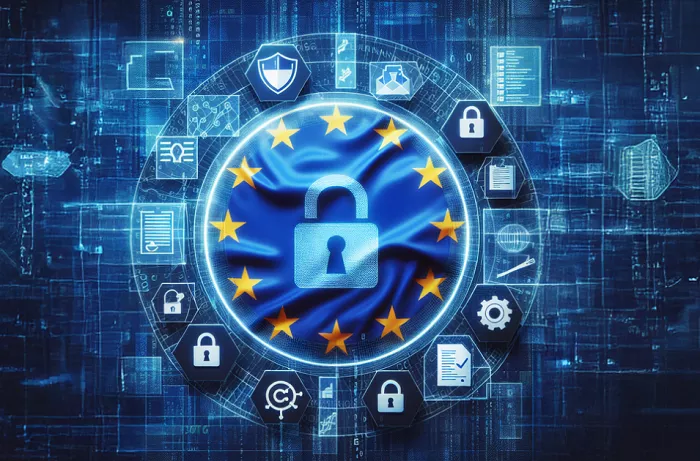In February 2024, Change Healthcare, a subsidiary of UnitedHealth Group and one of the largest medical claims processors in the U.S., became the victim of a significant ransomware attack. The breach, which led to the theft of sensitive data, disrupted healthcare operations nationwide.
This attack resulted in halted electronic payments and claims processing, forcing patients to pay out-of-pocket and putting immense financial pressure on healthcare providers. The data of approximately 190 million individuals was compromised, revealing critical vulnerabilities in the healthcare sector’s cybersecurity.
The breach underscored the urgent need for stronger cybersecurity defenses, such as multi-factor authentication, to protect interconnected systems and sensitive patient data. Beyond the financial fallout, the attack disrupted healthcare services, highlighting the broader implications of cyber threats on public health infrastructure.
Cybersecurity threats are escalating in both sophistication and frequency. Attackers are increasingly using ransomware, supply chain attacks, and AI-driven vulnerabilities to target critical infrastructure. These threats are more difficult to detect, particularly with the rise of malware-free attacks, which can bypass traditional security measures.
Malware refers to software designed to damage systems or steal information. Ransomware is a type of malware that locks victims out of their own data or systems until a ransom is paid. Supply chain attacks occur when hackers exploit vulnerabilities in third-party vendors with access to a company’s data or systems. AI-driven vulnerabilities are weaknesses that can either result from AI systems themselves or be more effectively exploited using AI technologies.
As cyber threats evolve, the need for continuous vigilance and robust security frameworks becomes even more critical to maintaining business continuity and safeguarding sensitive data.
The European Union and the United States take markedly different approaches to cybersecurity regulation.
The EU employs a unified approach with regulations like the Network and Information Security Directive 2 (NIS2), the General Data Protection Regulation (GDPR), and the Cyber Resilience Act (CRA). These frameworks apply across member states and address evolving threats such as ransomware, supply chain attacks, and AI vulnerabilities. They mandate incident reporting, risk management, and secure product design.
In contrast, the US relies on a decentralized, sector-specific model. Regulations such as the Health Insurance Portability and Accountability Act (HIPAA) apply to healthcare, while voluntary frameworks like the National Institute of Standards and Technology (NIST) Cybersecurity Framework guide best practices. While this offers flexibility, it also leads to inconsistent application and oversight.
With cyber threats on the rise, regulatory frameworks are essential for protecting data, ensuring business continuity, and strengthening overall security infrastructure. Strong regulations help build trust and encourage compliance while enabling businesses to protect critical operations. The EU supports companies through standardized rules and resources, but even with centralized guidance, businesses face hurdles in compliance.
Despite offering robust protections, the EU’s cybersecurity framework presents challenges. Businesses face complex compliance requirements under multiple regulations such as GDPR and CRA. Non-EU businesses, in particular, encounter difficulties due to limited support and the challenge of aligning with foreign standards. Enforcement consistency also varies across member states, adding to the complexity.
In addition to regulatory complexity, companies often lack the resources and expertise needed to ensure full compliance. Supply chain management becomes increasingly difficult when vendors outside the EU are unfamiliar with the region’s regulations. The ongoing evolution of these laws further strains operational capacity, requiring constant monitoring and adaptation. Despite these challenges, effective implementation and enforcement are critical to improving cybersecurity resilience.
From ASUS’s perspective, the EU’s cybersecurity regulations present both opportunities and obstacles. On the positive side, robust data protection rules enhance customer trust and improve market competitiveness. However, meeting these compliance requirements can be resource-intensive, especially when adapting to frequently changing regulations.
ASUS values engagement with EU regulators, as it allows companies to provide feedback and influence practical, innovation-friendly rules. This approach enables businesses to remain compliant without compromising their competitive edge.
The EU’s upcoming AI Act and Cyber Resilience Act are expected to have significant long-term impacts. The AI Act classifies systems by risk and imposes corresponding obligations. The CRA mandates that digital products be secure by design, embedding security throughout the entire product lifecycle—from development to maintenance.
These risk-based, forward-looking regulations will likely influence global standards, requiring companies to re-evaluate their product strategies. Businesses will need to incorporate secure design principles, conduct regular risk assessments, and maintain transparent documentation to demonstrate compliance.
As cyber threats continue to evolve, comprehensive regulatory frameworks like those in the EU will be essential. While the EU’s approach offers robust protection, companies must overcome compliance challenges. Future developments in AI and IoT regulation will further shape the landscape, demanding agility and cooperation among stakeholders.
For ASUS and similar enterprises, adapting to new regulations presents both challenges and opportunities. By investing in compliance and innovation, companies can help create a safer, more resilient digital future.


